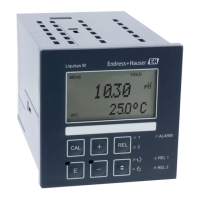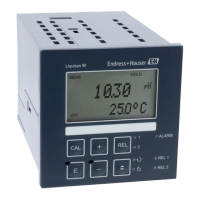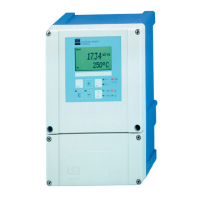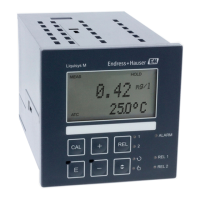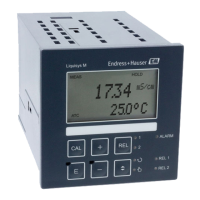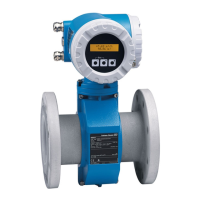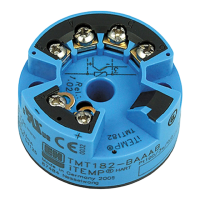Liquisys M CUM223/253 Commissioning
Endress+Hauser 65
Pay attention to the following:
• Sludge samples tend sediment. Mix the sample well, even during the calibration process,
but not to the extent that gas bubbles are formed.
• The sensor has to be far enough away from the floor and the wall of the calibration vessel
during calibration. The immersion depth must be at least 40 mm.
• The characteristic determined during the calibration is stored in the selected data record
(Setup 2, B4 field).
• Calibration is not possible if data record 1 is selected with the factory setting.
• If the calibration data deviate from the standard values by a factor of two or more, a
warning (E084) is output. The calibration results are accepted.
• If the calibration results are outside the permitted range, a calibration error (E045) is
indicated. The calibration results are not accepted.
• For every type of calibration, the installation adjustment and the offset are reset to zero
and the slope to 1.0.
Calibration menu
The calibration menu offers the following options:
Three-point calibration (3–Pt)
You should perform the calibration in the turbidity/solids concentration range in which you
plan to measure. The overall calibration characteristic of the measuring chain is determined
using three samples of known turbidity or known solids content.
Calibration with a very dark, high-absorption medium returns small slopes while light, clear
media return big slopes.
You can create the requisite probes by diluting a medium sample. In general, very good
calibration results are achieved with a concentration gradation of 10 %, 33 % and 100 %.
The following condition must be met for the calibration:
a0006961
Fig. 31: Making the samples for a three-point calibration
A Original sample
B 1 part sample A + 2 parts water
C 1 part sample A + 9 parts water
3–Pt Three-point calibration
Corr Three-point correction
Edit Edit calibration
Refl Installation adjustment
1–Pt One-point calibration
Data Calibration data
Sample A > 1.1 x sample B > 1.1 x sample C

